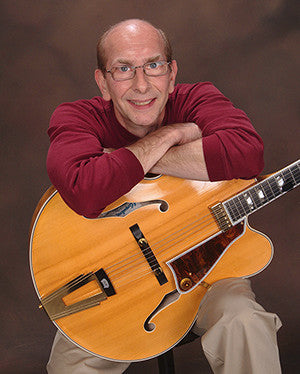A Guitar Lesson from Bruce Lee
Lee, of course, was the iconic actor, teacher, and philosopher who forged his own martial arts style. Along the way he became the first to take highly secretive Chinese martial art techniques and make them available to the world. He originally began teaching a traditional martial art system of kung fu known as Wing Chun, but later introduced his distinct new system called jeet kun do.
He is famously quoted that his form of martial art is the “style of no styles.” That philosophy is an intriguing way to think about our own approach to the guitar―as we’ll see in a moment. Some background first.
The legendary Lee’s advice to his students was to avoid what he called the “classical mess.” What he meant was rejecting the strict adherence to the ways of one traditional system, while also avoiding a rigid close-mindedness to others. Lee felt that no martial art style was inherently better than another. Each had its own strengths and weaknesses.
Lee also believed that everyone has fundamentally different skills and levels of physical aptitude. A given technique in one system might be appropriate for one person, but not for another. Lee espoused a broad-minded approach to studying the martial arts based on his professed aversion to the “classical mess”―that is, by telling students to “accept what is useful, and discard what is not.”
A particular example of accepting what is useful in guitar playing comes to mind.
As a jazz player, I listen to a lot of Barney Kessel―a personal favorite and influence. The blues have always suffused his style. Yet, in his later years, certain elements of rock seem to have entered his playing. Personally, I hear rock-like lines in his playing as marked by, among other things, occasional yet aggressive string-bending.
Could Kessel have picked this up during his many years as a studio musician on the legendary Wrecking Crew―the group of studio players, many from the jazz ranks, who played on countless pop tunes in the 1960s and 1970s? Kessel was recorded on hundreds of numbers, including hits by the Beach Boys and the Monkees. He was the archetypical jazz player. But he was immersed in the world of rock and roll, like many other players of his day, to pay the bills. Over time, it appears that Kessel accepted what was useful to him and made certain rock phrases part of his sound.
Bruce would have been proud of Barney.
Kessel opened his mind and ears to techniques outside his base style. In the spirit of Bruce Lee, he took different concepts and incorporated them into his own sound. That’s an important take-away for all guitarists.
Lee’s free-form philosophies and insistence on opening up martial arts instruction to all caused him to incur the wrath of his martial art elders. His shocking death at age 32 has forever been shrouded in mystery. Many believe he died at the hands of vengeful rivals. Lee’s death was officially attributed to cerebral edema, which is accumulation of fluid in the brain. But conspiracy theories remain.
This, of course, is irrelevant in the context of the guitar. What is relevant, however, is Lee’s fundamental world view. His belief in unhindered creative personal expression and boundless exploration is an inspiring way to approach musical discovery, in general, and our instrument, in particular.
And just to clarify …
In guitar playing, avoiding the “classical mess” doesn’t mean shunning Segovia. (Apologies to the memory of the great grandmaster.) Rather, it’s about avoiding being locked into a style-centric way of thinking that can potentially limit our musical growth.
Clearly, it’s also about embracing what could be viewed as Bruce Lee’s fundamental lesson for guitarists: embracing a “style that is no style” … one based on taking what is useful from any and all others, one where you take what is useful for you as an individual player.
While this mindset is not right for every guitarist, it personally is for me and my approach to the instrument. Either way, it’s a compelling concept to consider.

